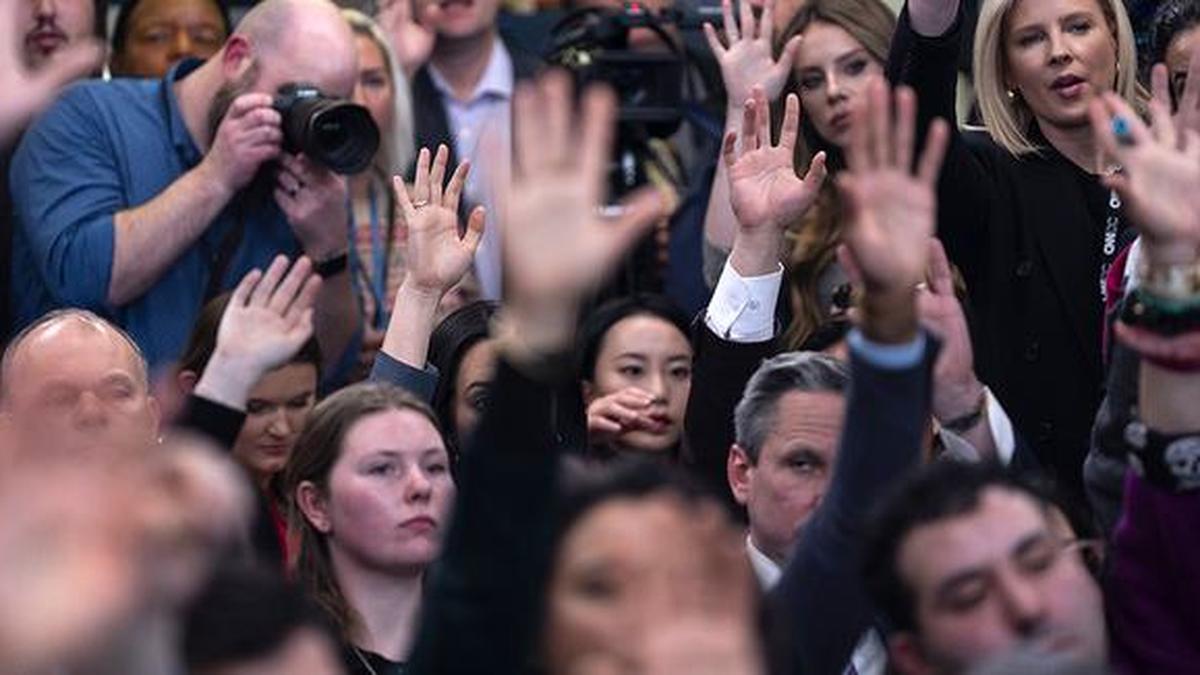A wide variety of independent journalists are making their mark moving away from traditional news outlets.
| Photo Credit: AP
First word of the Trump administration’s since-rescinded order to freeze spending on federal loans and grants came not from a major news organisation, but from a woman working alone in her Brooklyn apartment.
Marisa Kabas’s scoop this past week was a key moment for a growing cadre of journalists who work independently to gather and analyse news and market themselves as brands. Many are refugees from legacy outlets while others are scrappy newcomers like Ms. Kabas, who found traditional career paths unappealing or out of reach.
“This week has been career-changing,” Ms. Kabas said in an interview. “In a sense, my job has changed overnight.”
She was sitting at her kitchen table last Monday, sifting through emails on her laptop, when a source forwarded her a copy of a memo announcing the freeze sent by the Office of Management and Budget’s acting director.
Ms. Kabas has her own website, the Handbasket, but to give the story wider visibility, she posted a screen shot of the memo on the social media site Bluesky.
Then she waited.
Her stomach was in knots. She calmed herself with a walk on a frigid night. Despite her belief in independent journalism — and her own work — she recognised that to many, news only becomes “real” when it appears in a major outlet. Three hours later, The Washington Post published its story, with a hat-tip to Ms. Kabas.
The directive caused such an uproar that the administration walked back its order two days later.
Ms. Kabas, 37, kicked around in various journalism and publicist jobs and freelanced for outlets like MSNBC.com, the Huffington Post and New Republic. She started her website in 2022 primarily for personal writing and decided to go “all in” with journalism the next year.
The advantage to going it alone is that “I get to write about things that I care about,” she said. “I don’t have to work on assignments that are given to me that I don’t care about.” The downside is she’s all alone, dependent upon her own hustle.
Ms. Kabas wrote on ex-congressman George Santos, the raid on a weekly newspaper in Kansas, and Elon Musk, although much of her writing was essays instead of reported work.
Like many in the independent journalism world, she doesn’t hide her opinions. She wrote that the OMB memo was “a truly unhinged document that sounds like it was written by the world’s most petty 4Chan poster.”
“She’s got attitude, she’s got personality,” said Greg Munno, a journalism professor at Syracuse University. “I think attitude and personality help these independent journalists connect with readers and potentially sources.”
Out of the streamline
A wide variety of independent journalists have made their mark, often working on publishing platforms like Substack and Beehiiv.
Seamus Hughes’ Court Watch pulls together interesting legal documents from around the country. Heather Cox Richardson’s Letters From an American explores the intersection of history and today’s politics. Peter Geoghegan’s Democracy for Sale investigates money in politics.
Oliver Darcy left CNN to break news and offer commentary about the media on his own site, Status. Two former Washington Post journalists have set up their own shops: opinion writer Jennifer Rubin’s site, The Contrarian, boasts the tagline “Not owned by anybody,” and tech writer Taylor Lorenz’s User Mag broke its own news last week on conservative influencer Candace Owens’ new venture.
Days ago, CNN anchor Jim Acosta announced he was setting up shop at Substack after quitting the network rather than accept a transfer to a middle-of-the-night time slot.
The more that traditional news outlets shrink or die, “something is going to fill that gap,” said Jeremy Littau, a Lehigh University journalism professor. “There is going to be a need for it.”
“Independent journalism is now the way forward,” Dan Rather, the former CBS News anchor and perhaps quintessential old-school journalist, posted on Facebook on Thursday. “Sadly, we can no longer rely on legacy media to hold the powerful accountable.”
Published – February 03, 2025 11:10 am IST

